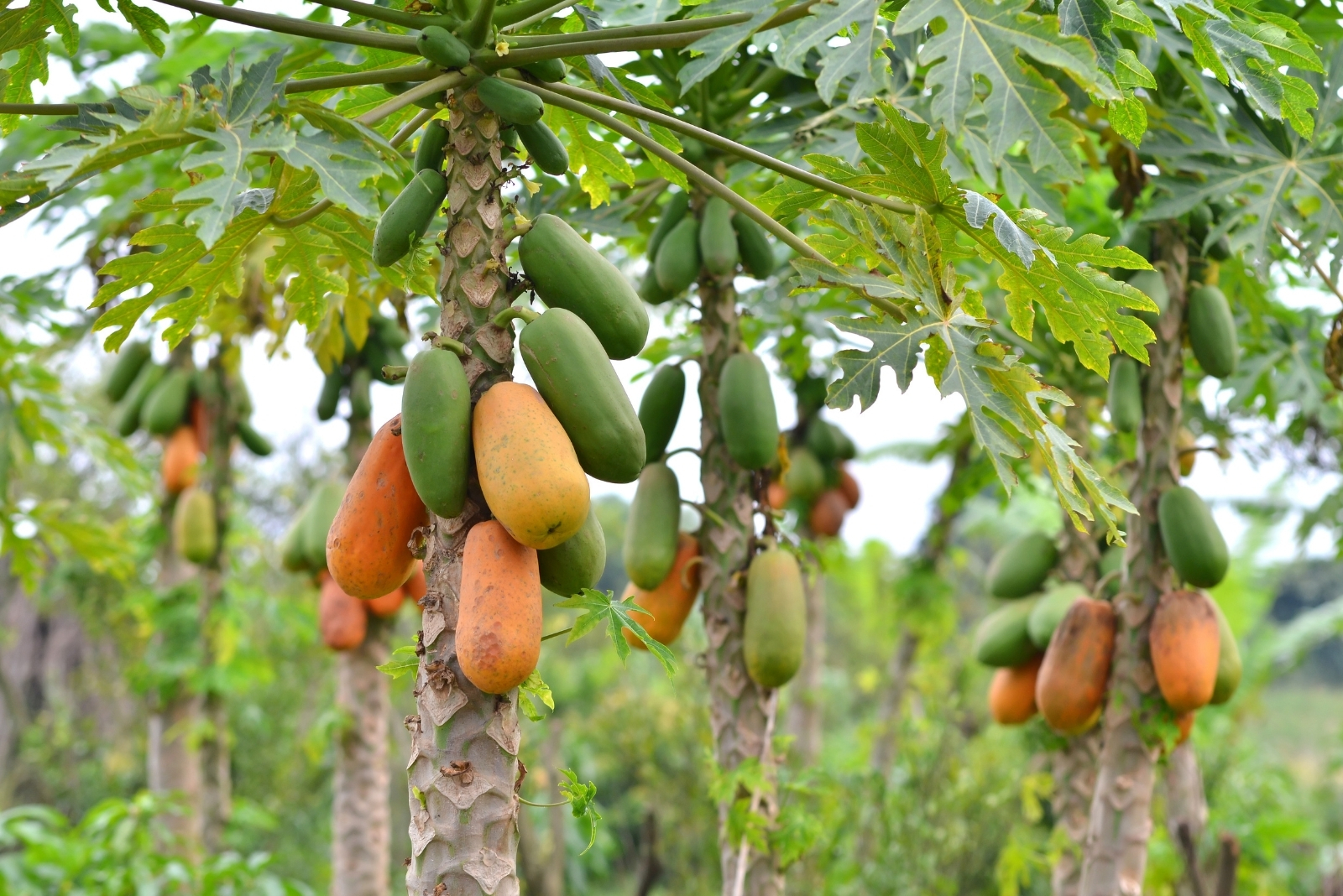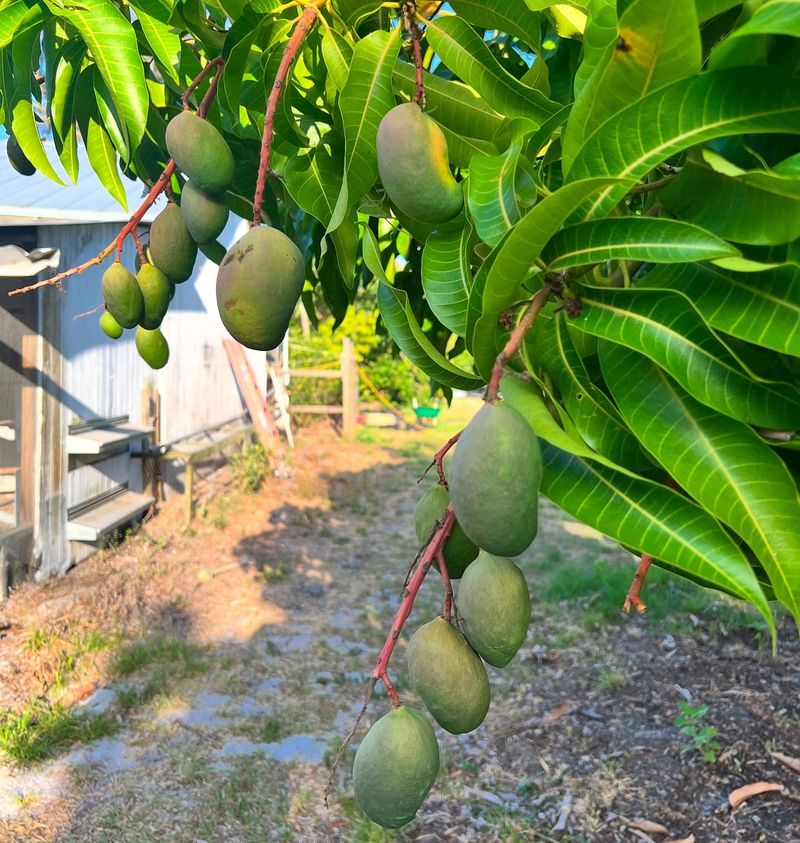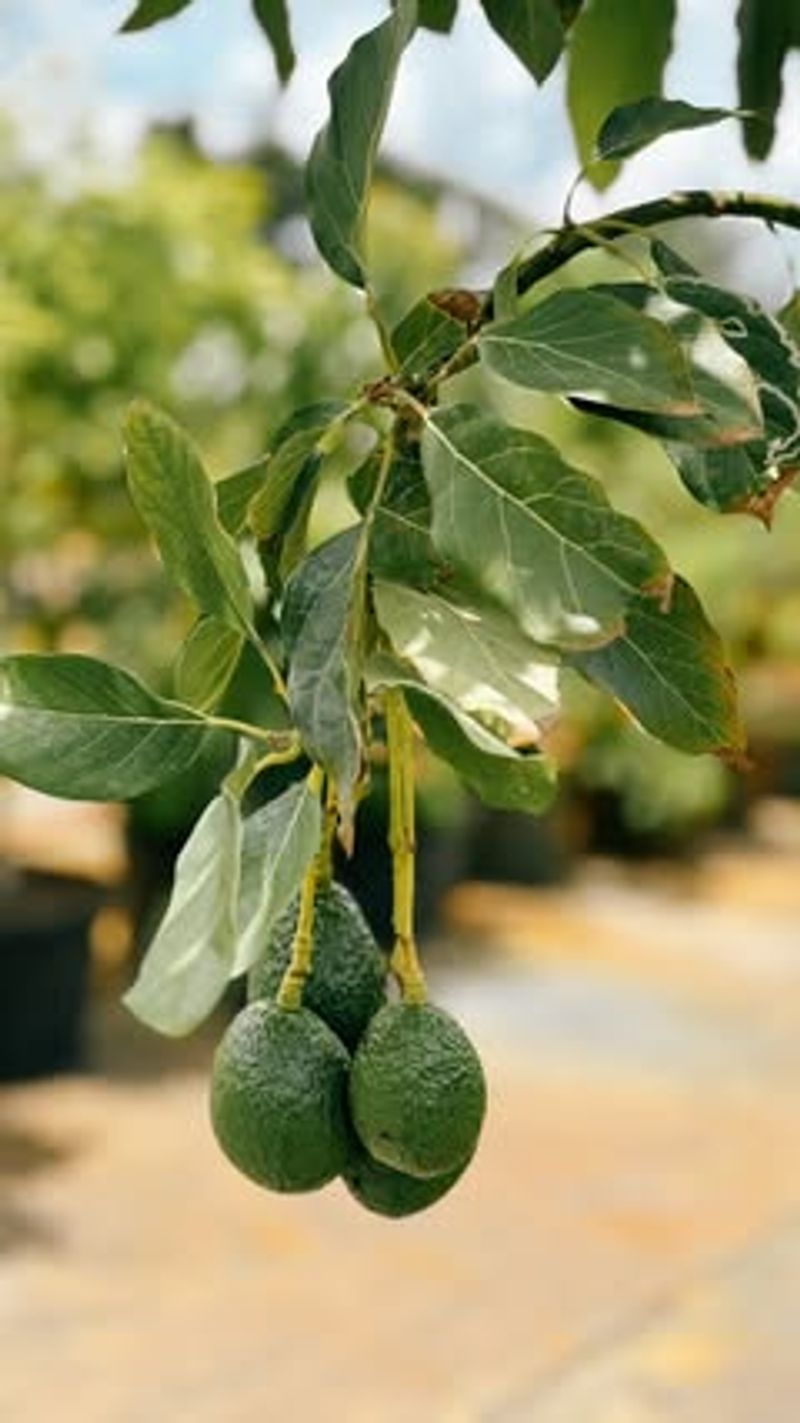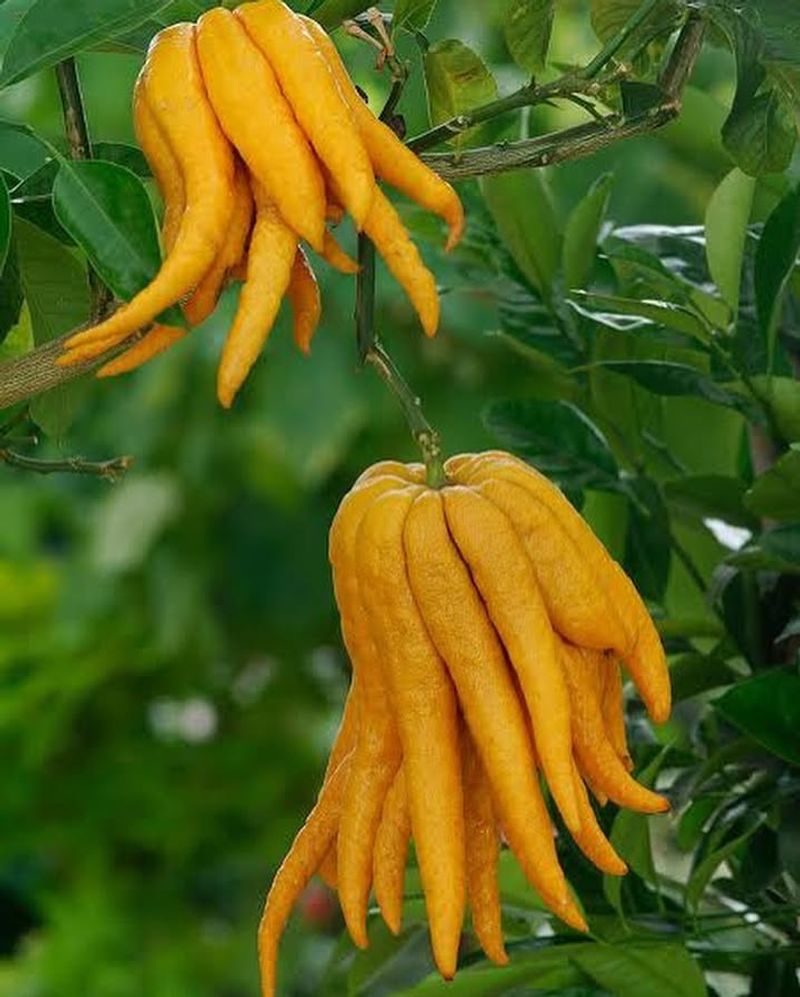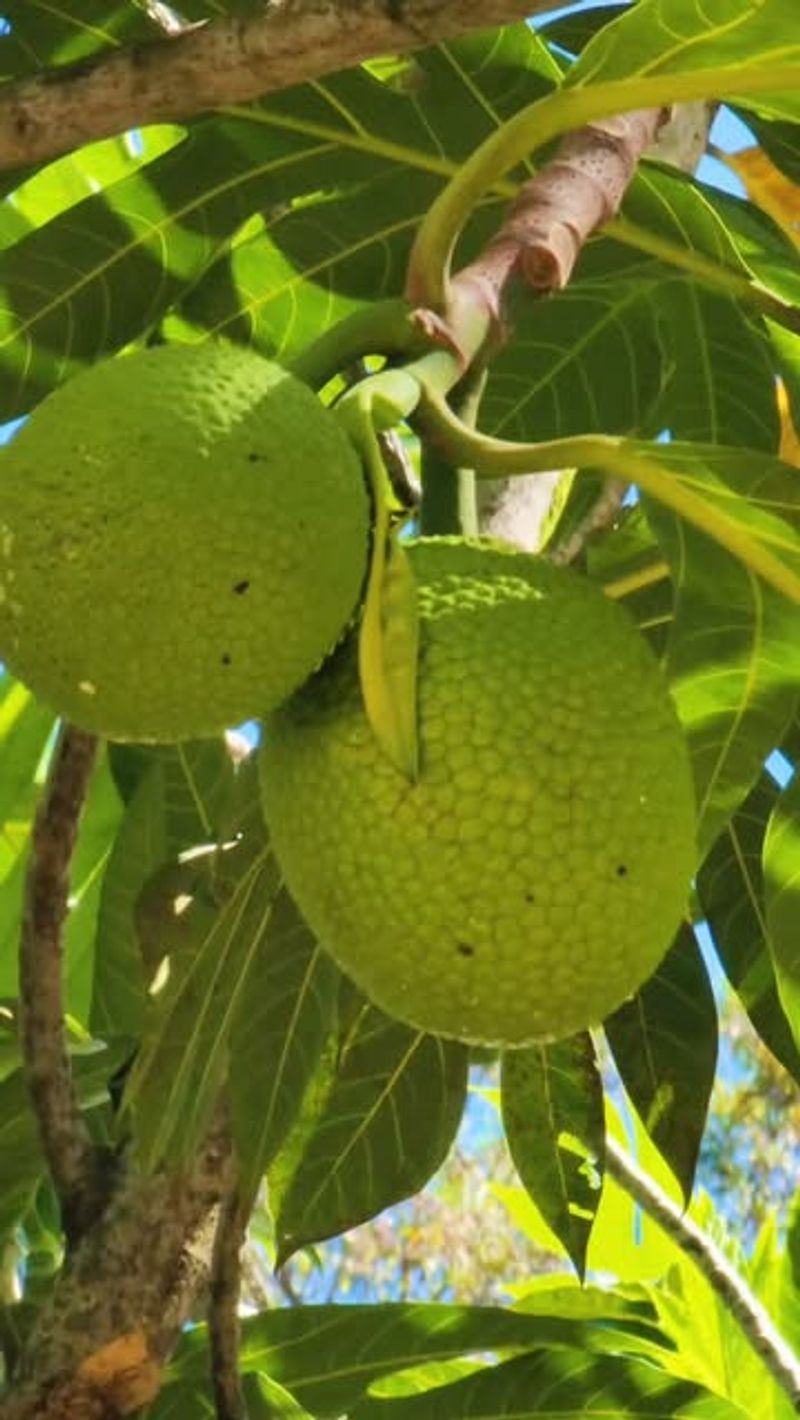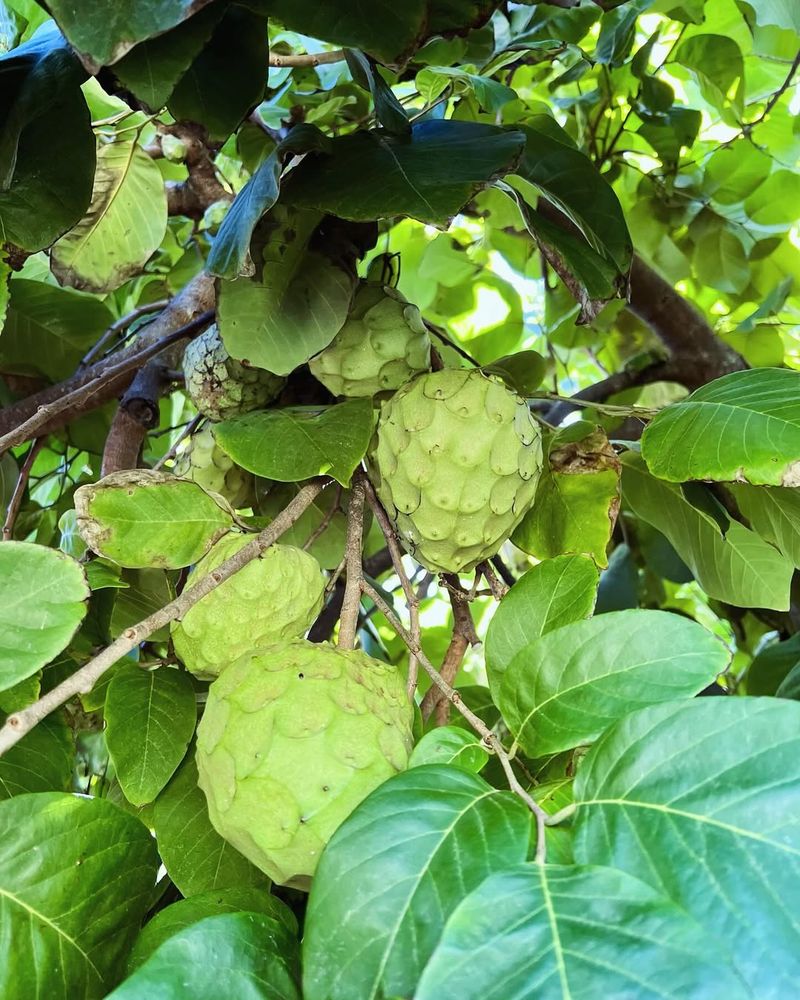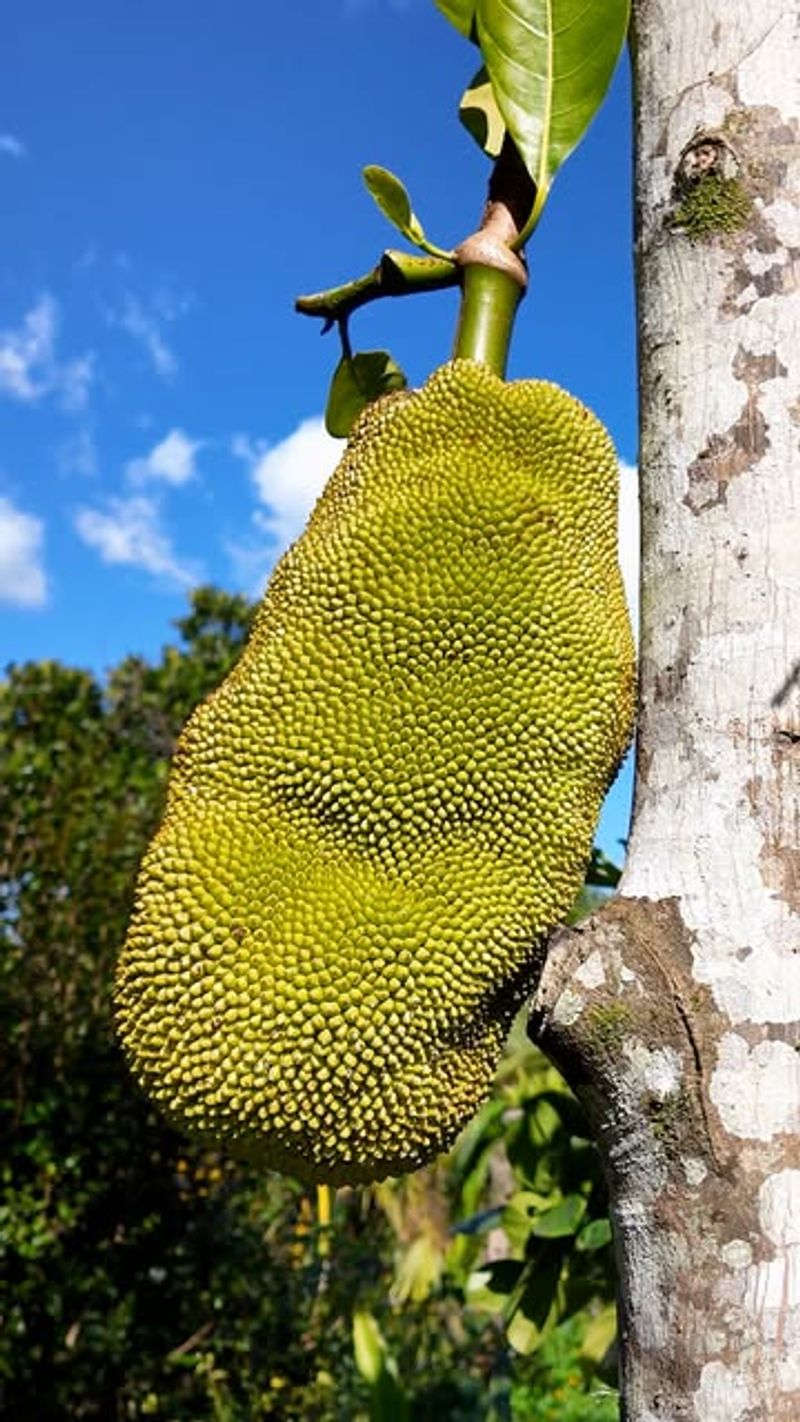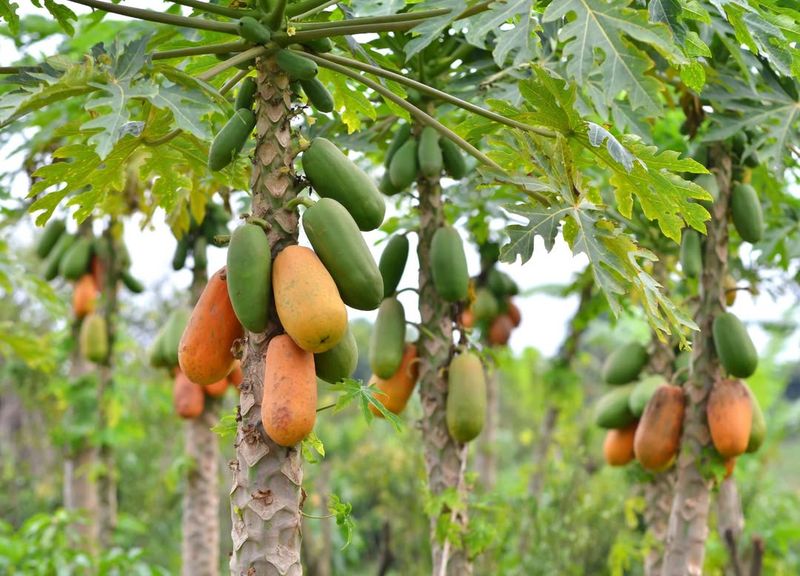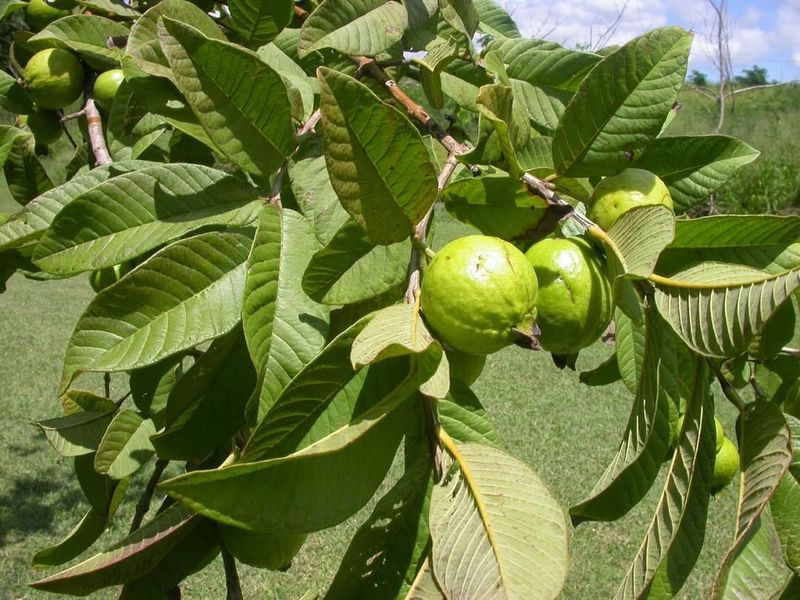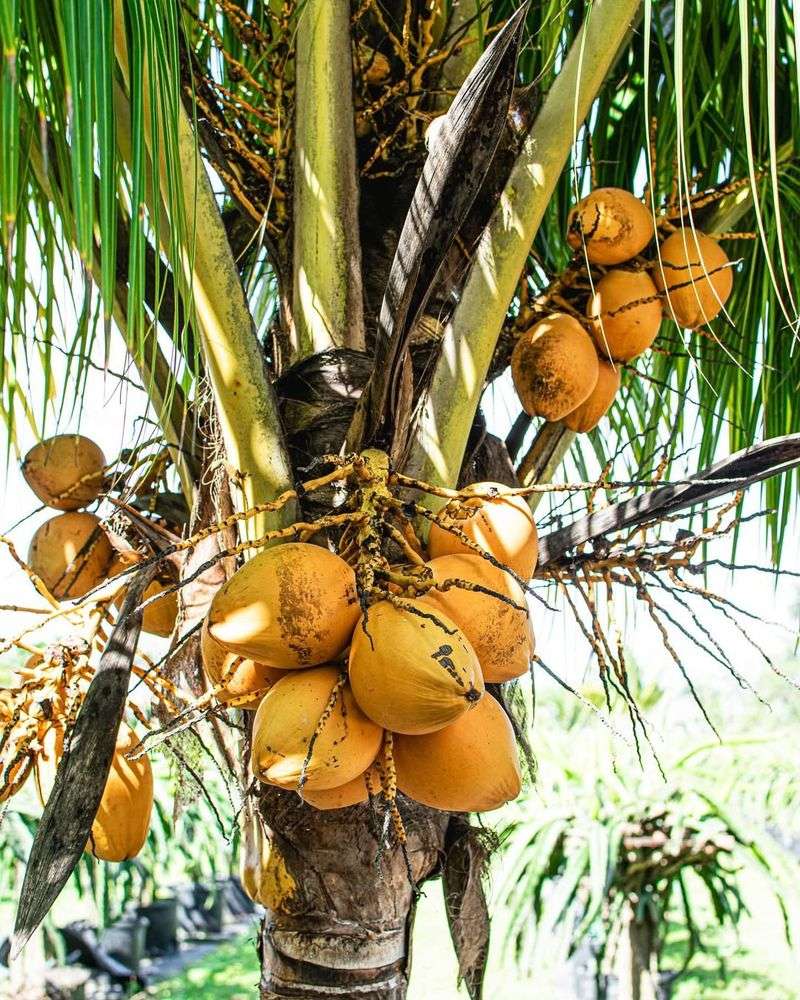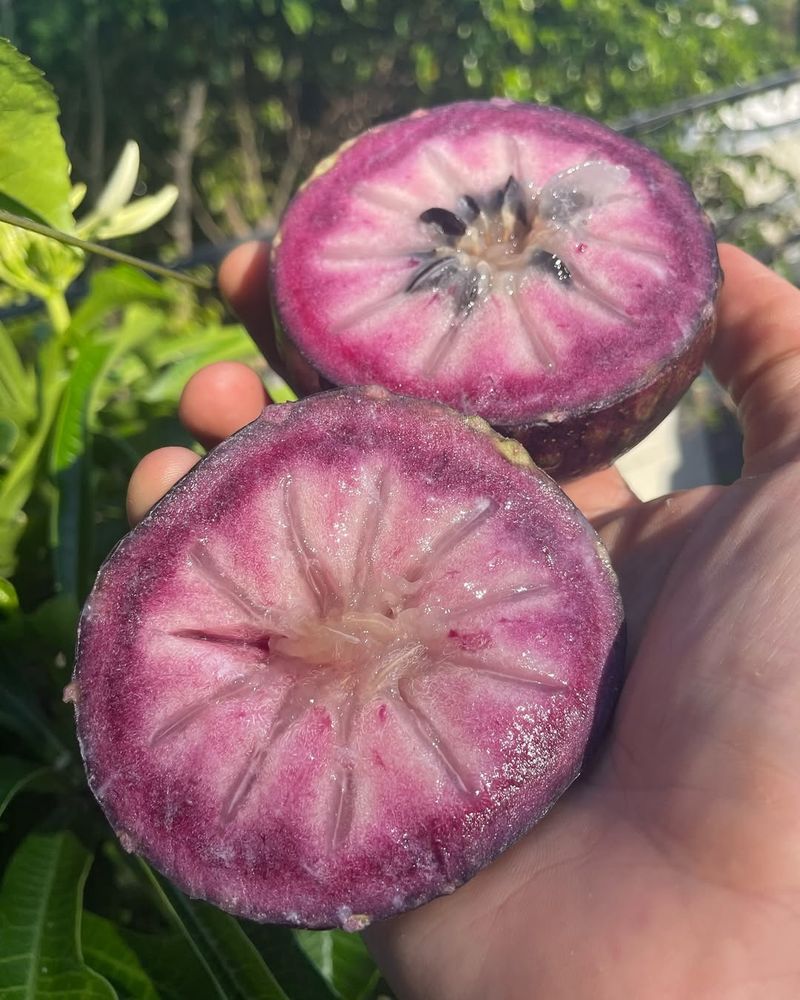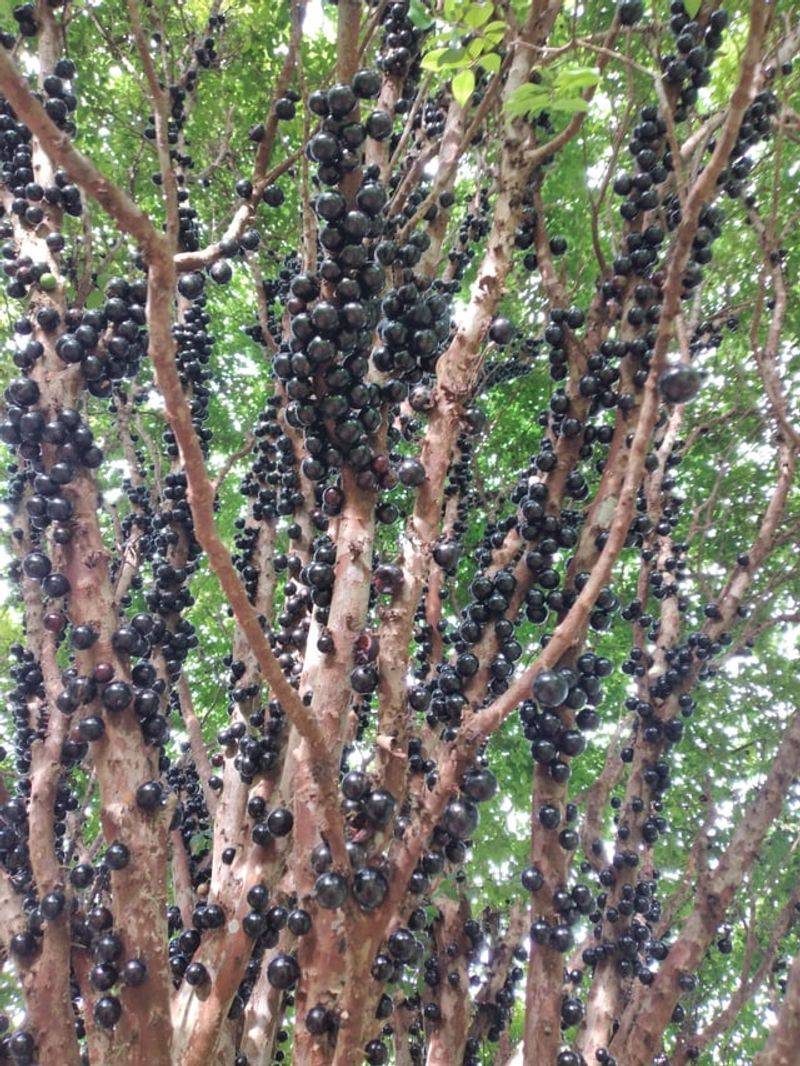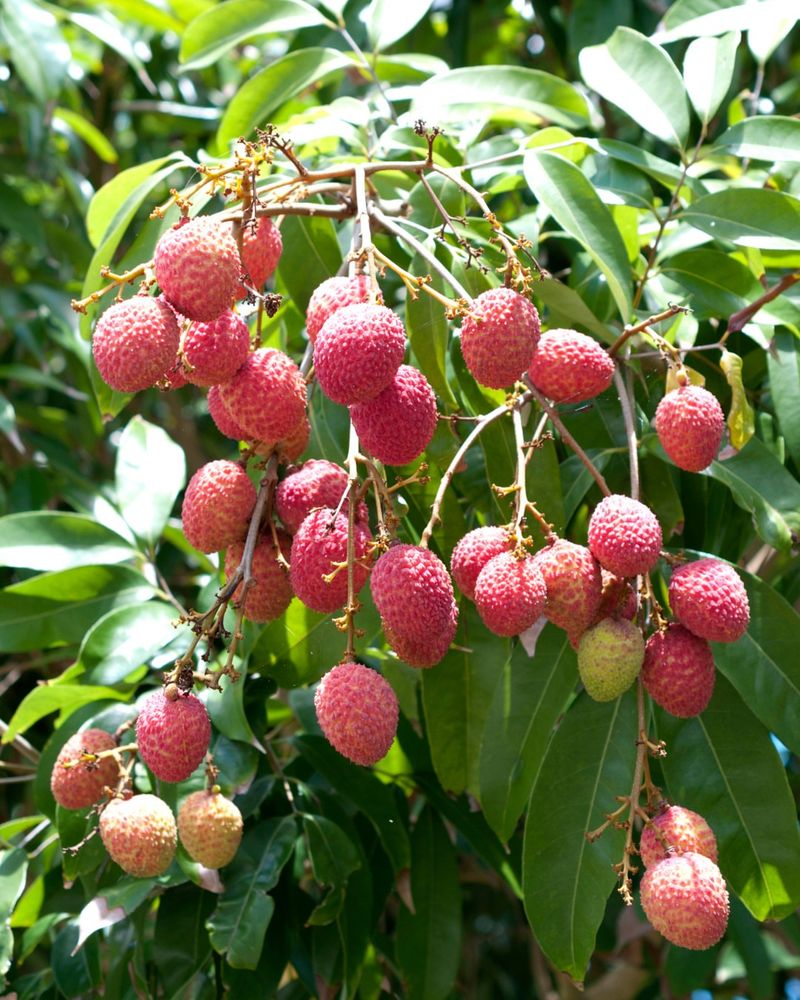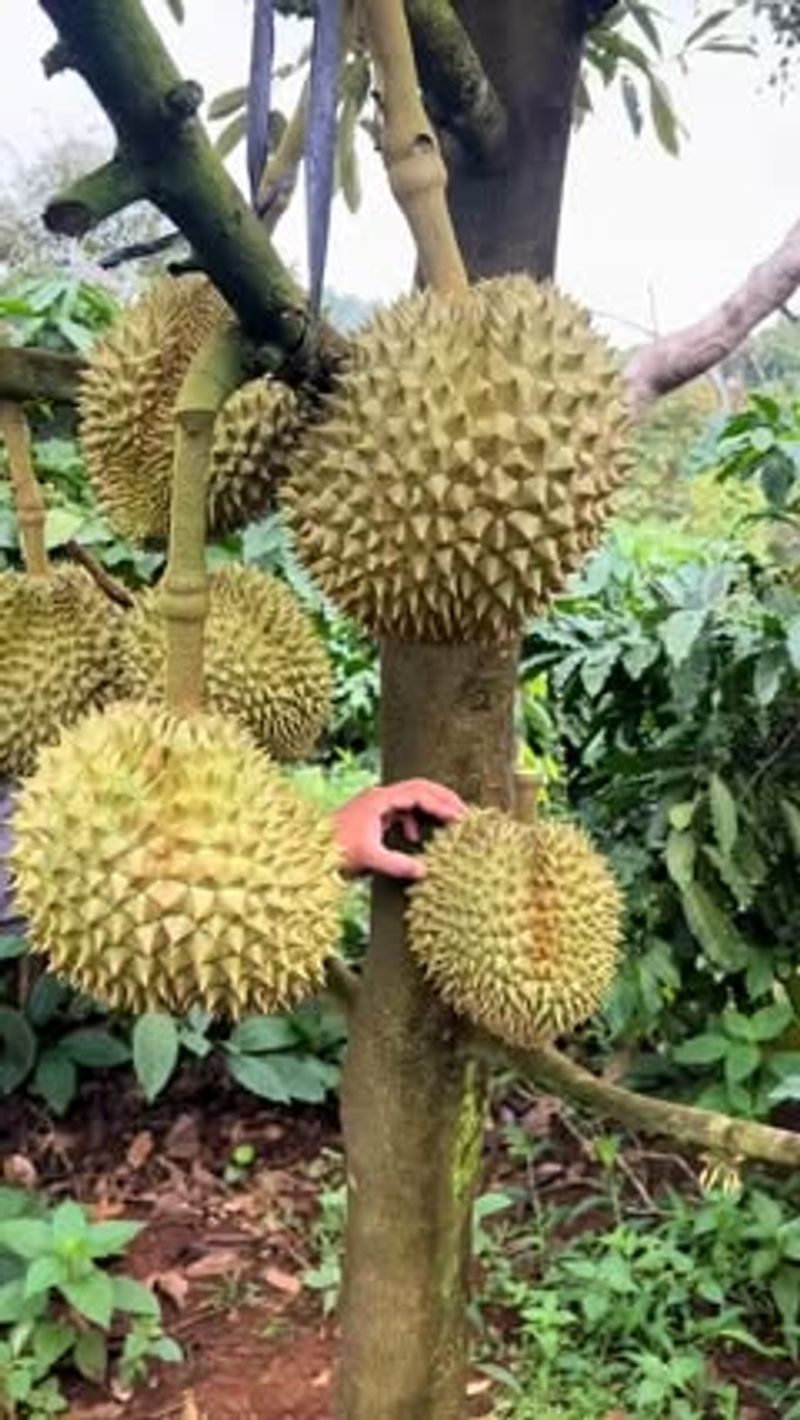Alabama’s warm climate is perfect for many fruit trees, but some are destined to disappoint. These 13 just don’t make the cut due to disease, pests, or climate struggles.
Planting them could lead to frustration instead of fresh fruit. Here’s a guide to help Alabama gardeners make smarter choices for their yards.
1. Mango
These tropical beauties simply can’t handle Alabama’s winter temperatures. Even in the southern parts of the state, occasional freezes will damage or kill these heat-loving trees before they ever produce fruit.
Many gardeners across Alabama attempt to grow them in containers, hoping to bring them indoors during cold weather, but they rarely thrive long-term under these conditions.
2. Avocado
Despite their popularity, avocados struggle in Alabama’s climate. The humidity encourages fungal diseases that attack their sensitive root systems, while winter temperatures can severely damage the trees.
Some determined Alabama gardeners try growing them as houseplants, but they rarely produce fruit indoors and often decline after a few seasons due to insufficient light.
3. Citron
This ancient citrus relative requires a consistently warm climate without freezing temperatures. Alabama’s occasional cold snaps make growing citron outdoors nearly impossible, especially in the northern regions of the state.
Unlike some hardier citrus varieties, citron shows damage even during mild frosts. The fragrant fruit is rarely worth the effort for Alabama gardeners seeking reliable harvests.
4. Breadfruit
Originally from Pacific islands, breadfruit trees cannot tolerate temperatures below 40°F, making them completely unsuitable for Alabama’s climate. The tropical tree would perish during the first winter chill that sweeps through the state.
Even container-grown specimens struggle in Alabama’s conditions. The high humidity combined with indoor winter protection creates perfect conditions for pest infestations that quickly overcome these sensitive trees.
5. Cherimoya
Known as the “custard apple,” cherimoya requires very specific climate conditions that Alabama simply can’t provide. The delicious tropical fruit needs mild winters without frost and moderate summers without extreme heat or humidity.
Gardeners in Alabama who attempt to grow cherimoya typically face disappointment. The trees may survive briefly but rarely flower properly in the state’s climate, making fruit production virtually impossible.
6. Jackfruit
These massive tropical fruits grow on trees that absolutely cannot handle Alabama’s winter temperatures. Native to South Asia, jackfruit trees suffer damage at temperatures below 35°F and will quickly die during typical Alabama winter cold spells.
Some gardeners in the southernmost parts of Alabama attempt to grow them with extensive winter protection, but the effort rarely results in healthy trees or any fruit production in the state’s climate.
7. Papaya
Fast-growing but extremely frost-sensitive, papaya trees will quickly perish in Alabama’s winter temperatures. Their soft, hollow trunks provide no cold protection, making them one of the least suitable fruit trees for the state’s climate.
Even in container culture, papayas rarely thrive long-term in Alabama. Their rapid growth quickly makes them too large for indoor spaces, yet they can’t survive outdoors year-round anywhere in the state.
8. Guava
While slightly hardier than some tropical fruits, guava trees still struggle with Alabama’s winter temperatures. Even brief exposure to temperatures below 28°F can kill established trees, making them risky for all but the most protected microclimates in the state.
Some Alabama gardeners grow them in large containers, moving them to protected areas in winter. However, these trees rarely produce significant fruit when grown this way in the state’s challenging climate.
9. Coconut Palm
Though technically not just a fruit tree but also a palm, coconut trees are sometimes attempted by ambitious Alabama gardeners. These tropical icons cannot tolerate temperatures below 40°F and will quickly die during normal Alabama winters.
Even the coastal areas of Alabama don’t provide suitable growing conditions. The occasional freezing temperatures that reach the Gulf Coast will kill coconut palms before they establish in the state.
10. Star Apple
This beautiful tropical fruit tree, also called caimito, requires a consistently warm climate without frost. Alabama’s winter temperatures make growing star apple outdoors impossible in any part of the state.
The distinctive purple or green fruits with their star-shaped seed pattern remain a dream for Alabama gardeners. Even container specimens rarely survive more than a season or two in the state’s conditions.
11. Jaboticaba
While somewhat more cold-tolerant than other tropical fruits, jaboticaba still struggles in most of Alabama. The Brazilian native can handle brief dips to about 26°F but suffers during extended cold periods common in the state’s winters.
Some determined gardeners in southern Alabama attempt them in sheltered locations. However, the slow growth rate means trees damaged by cold take many years to recover, making them impractical for most gardeners in the state.
12. Lychee
Despite their popularity, lychee trees are poorly suited to Alabama gardens. They’re extremely sensitive to both cold temperatures and heat stress, making Alabama’s climate challenging from both extremes.
Fruit production requires specific temperature fluctuations that Alabama doesn’t provide. Even if a tree survives in a protected location in the state, it will rarely flower properly or produce the sweet, translucent fruits.
13. Durian
Famous for its powerful odor, durian is sometimes attempted by adventurous Alabama gardeners. These tropical trees cannot handle temperatures below 45°F and will quickly succumb to even mild Alabama winter conditions.
The spiny, aromatic fruits remain elusive for state residents. Container-grown specimens rarely thrive in Alabama’s conditions and never reach fruit-bearing size when grown as seasonal plants in the state.

